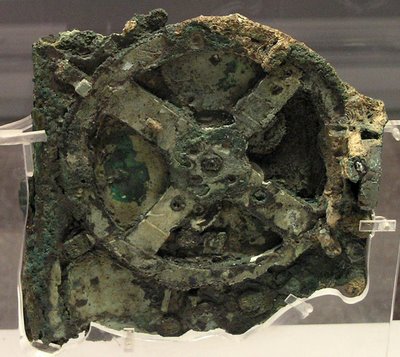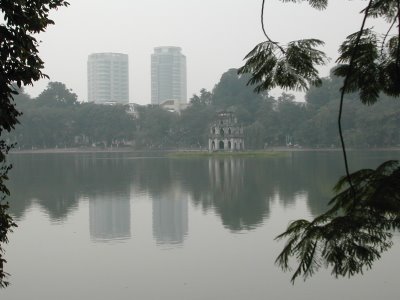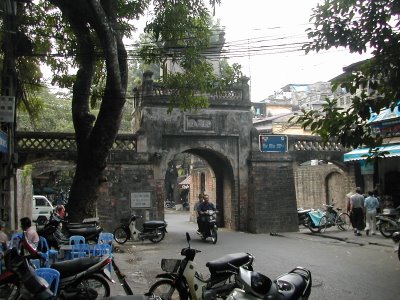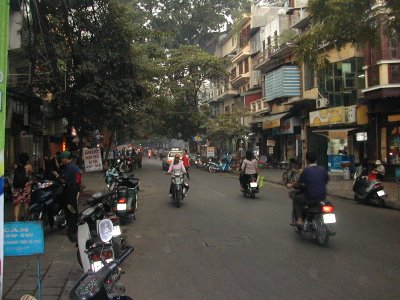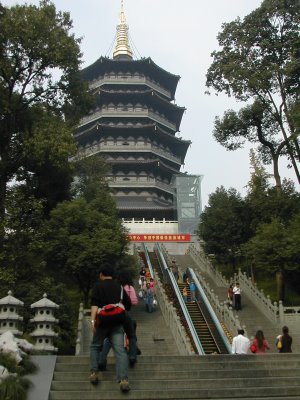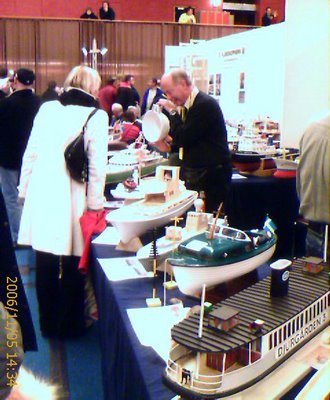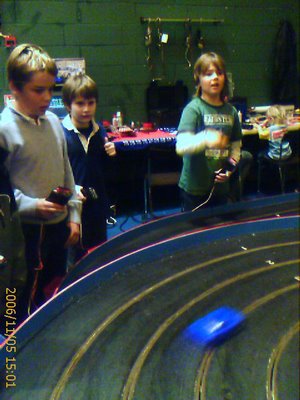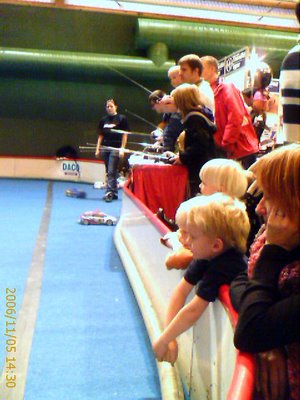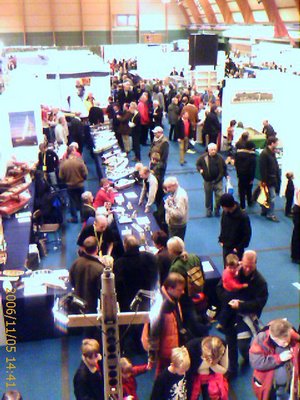 Why Radical Christians Hate Gay Marriage
Why Radical Christians Hate Gay MarriageBy Jim Benton
Openly, the Radical Religious opposition to gay marriage usually makes two arguments.
(The "gays are sinners and are going to hell, and should be prosecuted if the damn Supreme Court hadn't allowed sodomy" claim doesn't get made that much in public. Even red-state America has become accepting enough of gays and lesbians, and opposed to blatant discrimination, that this stance wouldn't sell among the electorate as a whole. But they know the bigots and gay bashers -- especially the ones who take the phrase literally -- will be on their side anyway, they don't have to appeal to them directly.)
The appeal to traditionThey usually start off with the argument to tradition. "Marriage has
always been between one man and one woman." With its appeal to a mythical past -- for most people "always" means "in their lifetime and their parents' and grandparents" -- this gets them a certain percentage of the votes.
But let's face it, it is a weak argument if you are trying to scare people onto your side -- and the appeal is to fear, don't get that wrong. Even if the statement were true, even if the idea of marriage hadn't changed throughout time (and certainly the ‘indissolubility of marriage' that is, in fact, Biblical, has changed, to the point that a surprising number of gay marriage opponents are on their second or third marriage) traditions are for those who celebrate them. "Thanksgiving dinner has
always included turkey." Well yes, and that is a celebration that I gladly celebrate. But if my neighbor chooses to serve ham or chicken or steak or is a strict vegetarian and serves lasagna, that doesn't make my turkey any less meaningful or tasty to me. In fact, it doesn't affect me unless somebody invites me to a Thanksgiving dinner and serves me chicken, as my mother-in-law once did. Grrrr. (I think I went out after dinner and bought a small turkey platter from a restaurant. This is one celebration I am
very devout about.)
But the fact of the matter is that the idea of "marriage means one man and one woman" just ain't so. And when I say this, I am not talking about anthropological evidence from societies throughout the world. Christians would, with a certain amount of justice, argue that it's irrelevant how a society of heathens conduct their life. They are only interested in the Judeo-Christian heritage they so proudly follow.
Unfortunately, that heritage doesn't bear them out. Early Judaism was polygamous, polygynous in fact. And the Christian claim that this was a "special exemption granted to the Patriarchs" is just plain wrong.

"How do we know? The Bible tells us so." At least Leviticus does. The commandments of Leviticus were written for the whole of society, not the patriarchs. If you read the whole of Leviticus 18 -- yes, the very same chapter that condemns male-male anal sex (I know of no verse in the Bible that mentions oral sex of any type) -- you'll find several passages that only make sense in a polygamous society.
The obvious examples start with Leviticus 18:7-9:
7 Do not dishonor your father by having sexual relations with your mother. She is your mother; do not have relations with her.
8 Do not have sexual relations with your father's wife; that would dishonor your father.
9 Do not have sexual relations with your sister, either your father's daughter or your mother's daughter, whether she was born in the same home or elsewhere."
I could go on to quote other verses, but these are enough to show the distinctions that are made between "your mother" and "your father's wife". your sister who is "your father's daughter" and your sister who is "your mother's daughter". Such distinctions only make sense in a polygamous society.
Was this just a dispensation for the times? No. Jewish society remained polygamous at least up until the time of Jesus. Perhaps not in the rural, poor parts of Galilee where Jesus lived. But let us look at what Flavius Josephus has to say. The great general and historian was born into the highest priestly class of Jerusalem, as he proudly relates in his Autobiography. He was almost contemporaneous with Jesus, in fact, he was born within a couple of years of the traditional date of Jesus' death. In the same Autobiography he tells us:
"I was myself brought up with my brother, whose name was Matthias, for he was my own brother, by both father and mother..."
Again, this is a distinction made unnecessary except in a polygamous society. But did Jesus condemn the practice? (He did condemn divorce, but the Old Testament has many condemnations of divorce. In fact, there are several places where a man is told that, because of a crime, such as falsely accusing his wife of not being a virgin, he must remain married to her, yet he is not prohibited from having other wives.) He is not shown to, but then there must have been many preachings of his that did not get recorded in the Gospels. If he did condemn having multiple wives, the writer of the Epistles to Timothy and Titus and the early Church do not seem to have been aware of it. (I'll use the KJV. The New International is better, but a lot of Christians act like they believe "if the King James was good enough for St. Paul, it's good enough for me." And in fact, the statements are stronger in it.)
1 Timothy 3:2. A bishop then must be blameless, the husband of one wife,
1 Timothy 3:12. Let the deacons be the husbands of one wife, ruling their children and their own houses well.
Titus 1:5-7. 5 For this cause left I thee in Crete, that thou shouldest set in order the things that are wanting, and ordain elders in every city, as I had appointed thee:
6 If any be blameless, the husband of one wife, having faithful children not accused of riot or unruly.
7 For a bishop must be blameless, as the steward of God; not selfwilled, not soon angry, not given to wine, no striker, not given to filthy lucre;
But: if these are specific requirements for a bishop or deacon, they can't be the requirements for the people as a whole. They may be considered advisable. Polygamy might be blameworthy, but it is not forbidden. (Thus being self-willed or given to wine are flaws, not forbidden. Imagine if the passage read must not be a murderer and you can see the absurdity.)
Even if this was all that was meant by "traditional marriage", it seems hard to understand how expanding it to include same-sex marriage would be at all threatening to it. This point has been made time and again, both by gays (Barney Frank's question to Bob Barr, "Which of your three marriages is threatened by mine?) and heterosexual couples who deny any feeling of threat from the acceptance of gay marriage.
Marriage as defined by female submissionBut, I would argue that while many of the people who make the statement about marriage being threatened are just parroting what they have heard, the Radical Christian opponents actually mean something different when they talk of "traditional marriage". And they are quite right in their argument. Gay marriage
is a threat to their conception of what marriage should be.
A "good, Christian marriage" is not just one involving one man and one woman. It involves a specific relationship between them. A wife is supposed to be subject to the husband, and the children to the parents, as humanity is subject to God.
To quote Focus on the Family's
What Does It Mean to Be a Wife by Mitch Temple:
The apostle Paul urged older women to teach younger women, "so that they will wisely train the young women to be sane and sober-minded -- temperate, disciplined -- and to love their husbands and their children; to be self-controlled, chaste, homemakers, good-natured (kindhearted), adapting and subordinating themselves to their husbands, that the word of God may not be exposed to reproach — blasphemed or discredited."
Again from FotF (
How a Husband Should Handle His Wife's Submission by Stormie Omartian):
"Submission is a choice we make. It's something each one of us must decide to do. And this decision happens first in the heart. If we don't decide in our hearts that we are going to willingly submit to whomever it is we need to be submitted to, then we are not truly submitting."
"This may be shocking news to you, but an overwhelming majority of wives in my survey said they want to submit to their husbands. They want their husbands to be the head of the home, and they have no desire to usurp that God-given position of leadership. They know what the Bible says on the subject, and discerning wives want to do what God wants because they understand that God's ways work best."
"Okay, okay! I know that God did not say a wife needs to submit to her husband only if he proves to be worthy. Submission is a matter of trusting in God more than trusting in man. But a wife will more easily make the choice to submit to her husband if she knows that he has made the choice to submit to the Lord. It will be a sign to her that it is safe to submit to him."
For a similar view let's look at the Southern Baptists. In an article on subjugation of women in that denomination, Dr. Bruce Prescott & Dr. Rick McClatchy (who have become "Mainstream Baptists", a group which split from the Southern Baptists as a protest against the emergence of extreme and rigid conservatism in the older group) write in
Baptist Faith and Message, a Baptist "Confession of faith"):
"subjugation of women extended to the privacy of Baptist homes when a statement on the family was added to the BF&M. In line with the chain of command made explicit in the 1984 resolution, the 1998 family amendment advised wives that they must ‘graciously submit' to their husbands."
"The unconditional nature of the wife's subjugation became clear at the official press conference following the statement's adoption. Dorothy Patterson, wife of Paige Patterson and a member of the committee that drafted the family statement, said, ‘When it comes to submitting to my husband even when he is wrong, I just do it. He is accountable to God.'"
But these groups are relatively liberal. I could go on and on -- oh, you've noticed -- but I'll end this by requoting Tedd Tripp, from my article on
baby beating.
"You must provide examples of submission for your children. Dads can do this through biblical authority over their wives, and Moms through biblical submission to their husbands." p. 142
"Don't waste time trying to sugarcoat submission to make it palatable. Obeying when you see the sense in it is not submission; it is agreement. Submission necessarily means doing what you do not wish to do. It is never easy or painless." p. 145
"Your children [and by implication, your wife] must understand that when you speak for the first time, you have spoken for the last time." p. 151
But what has all this to do with
gay marriage? After all, many, hopefully most marriages outside of the stricter religious groupings would reject these teachings, would look on horror at this sort of authoritarian marriage. (In fact, many people who saw their parents in such a relationship have recoiled in horror at it and made sure they would not experience what they saw their parents, particularly their mothers, undergo.) And there is no doubt that gay relationships can be dominant/submissive themselves.
This is true, but a heterosexual marriage that deviates from "God's plan" can be condemned as such, and there is always hope that through "good Christian example" teaching, preaching, and prayer, these "misguided sinners" can be shown the proper path. (And the true dominionists can hope they will have the power of the state at least to teach students properly, and even have laws that will correct the poor, deluded "equalitarians".)
But there is no way that a gay couple can choose to conform to these teachings. The roles, in the minds of the radical Christians are biologically and theologically based. The question of which gender should be submissive is not a matter of choice. It is rooted in the idea that "man was created first and woman sinned first" in Eden. Yes, a woman may (and should, according to voices like Stormy Omartian's) freely choose to submit to her husband and act according to God's plan. But that is because she is a woman. A man who should choose to submit to his wife, in the same way, would be an unnatural abomination.
And, obviously, same-sex marriages either do not have a woman to "willingly submit to whomever it is we need to be submitted to", or they lack a man to be submitted to. No amount of preaching can change this, no amount of Christian example will change this. Any gay marriage, by existing, challenges this idea of a proper, "traditional" marriage.
Even if one man in a gay marriage chooses the role of homemaker, of the guided one, the "wife", this is not sufficient, since he is going against his masculine nature. (And of course, the corresponding can be said for lesbians, like the two women who were my parents. They have no one to express their femininity to by submitting, and again, if one is dominant, this is condemned as well by the fundies' god and Bible.)
It is a constant threat. No wonder radical Christians are horrified and must fight it. In their way of conceptualising things, gay marriage simply cannot be. And so it must not be. It's basically an issue of road-map versus terrain.
[More blog entries about religion, marriage, gaymarriage, Christianity; religion, äktenskap, homoäktenskap, kristendom.]Labels: Christianity, marriage, religion
